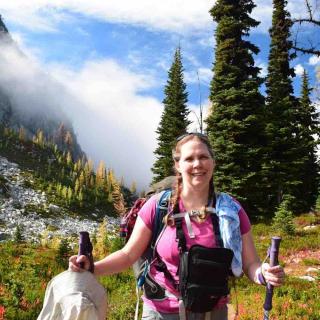
As you've no doubt heard, on Monday, Aug. 21, 2017, the sun will go dark in the middle of the day. It's not the end of the world – it’s the Great American Eclipse. The United States will experience its first total solar eclipse since 1979, and scientists and public alike are excited for this once-in-a-lifetime occurrence.
Seattle eclipse details
- In our area, the eclipse runs from 9:08 a.m. to 11:38 a.m.
- The maximum will be reached at 10:20 a.m., and, in the Puget Sound area, the sun will be around 90 percent eclipsed, depending on location.
- Cloudy skies can block the sun, but it will still get darker.
For months, people have been making plans to journey to states like Oregon where the 60-to-70-mile-wide Path of Totality (meaning where the eclipse will be 100 percent) can be experienced. But what if you can’t travel down to Oregon? You can still experience the eclipse from home with your family (as long as the weather cooperates). Here are a few ideas to help you get the most out of this singular event.
Watching the eclipse with young children
A bit of pre-planning and education before the day of the eclipse will make it safer and more enjoyable. In a recent webcast for science educators, Dr. Julia Plummer, astronomer and science educator of Penn State University, recommended simple activities to build a foundation of concepts.
- Start by observing shadows while outside. What direction do they point? Are shadows different lengths at different times of day?
- Read the book Bear Shadow by Frank Asch. Can you make shadows in a dark room with a flashlight?
- Then talk about the moon and how it moves in front of the sun for the eclipse and creates a shadow on the earth.
Elementary-aged and middle school children will be able to do more advanced scientific demonstrations, such as creating a model of an eclipse. When the Sun Goes Dark by Andrew Fraknoi and Dennis Schatz is a good book for these ages (it’s available in print or as an ebook). Videos and websites can explain the scientific concepts (see below for additional links and resources).
Safety first: Get your eclipse gear ready
Everyone needs to follow strict safety protocols. Looking at the sun for even a few moments can cause permanent damage. Each person must have approved solar viewing glasses (sunglasses are not enough) and be sure to order them well ahead of time. Reports of fake eclipse glasses are circulating; check for a reputable brand.
Young children will need help keeping their glasses on their heads; you can use pipe cleaners or elastic hair bands. Make sure you have enough adults nearby to help with young children. Teens and young adults will need to be particularly careful to keep glasses on while looking through smart phones or binoculars. You can buy special filters for cameras and telescopes to prevent damage to sensors or eyes. Alternatively, you can create homemade filters to go over your devices using special solar papers. If you lack solar viewing glasses, you can still watch the eclipse unfold by making a pinhole projector. Even a regular colander or interlaced fingers can be used to safely capture a shadow of the eclipse.
Find a Puget Sound party
Many local libraries and community centers are planning eclipse-watching parties. Here are a few special events:
- Pacific Science Center in Seattle is having an eclipse-watching event on Aug. 21. Activities include including looking through a solar telescope and educational demonstrations.
- This great article by Geekwire lists a number of local library events around the eclipse.
- In Portland OMSI is having a free partial eclipse-watching event in Portland. The sun will be occluded by 99 percent at that location, so it will be a good option if you are able to travel.
- If you are stuck at home or in the office, or if clouds move in, you can watch the event live on your computer on NASA’s website.
Take it deeper: Citizen science around the eclipse
Teens and adults can participate in citizen science activities to gather data for real scientific projects. Those of us outside of the zone of totality can make observations, as scientists are interested in what percentage of totality is required for certain responses to take place.
- Life Responds: Using the iNaturalist app, budding scientists can record observations of plant, animal and insect behavior around the eclipse. Records will be collected from all over the country.
- Eclipse Soundscapes: Use your smartphone to record sounds, like birdsong, as the light levels change. Even visually impaired people can participate in science during this event!
- GLOBE Observer: Take photos of clouds, and record air temperature and surface temperature changes. Some of these activities require additional online training before the occasion, and would be meaningful for independent learners or homeschoolers.
Additional resources
- NASA’s Total Solar Eclipse website is a thorough resource to start your research about the event.
- Big Kid Science has some excellent free professional videos and activities for kids about the 2017 eclipse.
- NASA has produced a free Eclipse Activity Guide – 44 pages of scientific background and activities for kids of all ages.
- The Astronomical Society of the Pacific has background information and more activities for kids and adults.
- Local astronomical educator Alice Enevoldsen’s website, Alice’s Astro Info, has a plethora of local information for astronomical events.











